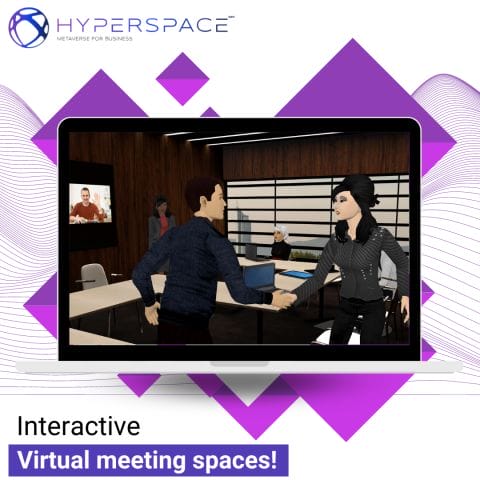Welcome to our article on effective remote team communication etiquette. In this digital age, where remote work has become the norm, it is essential to understand the importance of proper communication and collaboration within virtual teams. When teams are geographically dispersed, maintaining effective communication becomes even more critical.
Remote work offers numerous benefits, such as flexibility, increased productivity, and a better work-life balance. However, to reap these benefits, it is vital to follow remote team communication etiquette. By adhering to virtual team communication guidelines, you can foster a positive work environment, enhance collaboration, and ensure that everyone is on the same page.
Whether you are new to remote work or have been doing it for some time, this article will provide you with valuable insights and effective communication tips to help you thrive in a remote team setting. Let’s dive in!
Key Takeaways
- Remote team communication etiquette is vital for maintaining trust, accountability, and a positive work environment.
- Adhering to virtual team communication guidelines can lead to improved collaboration and work-life balance.
- Effective communication methods, setting clear expectations, and leveraging technology are key elements of remote team communication etiquette.
- Being punctual, fulfilling commitments, and communicating delays are crucial for remote work success.
- Establishing a professional workspace and avoiding common remote work pitfalls contribute to effective communication in virtual teams.
Why is Etiquette in Remote Work Important?
Trust is a fundamental component of successful remote work. Following remote work etiquette principles ensures the integrity, accountability, and commitment necessary for consistent, high-quality outcomes. Remote work etiquette also develops good character and work ethic, promoting a positive work environment and productivity.
Benefits of work-from-home etiquette include improved communication and collaboration, a professional and respectful work environment, privacy protection, a healthy company culture, clear communication boundaries, and a healthy work-life balance.
By adhering to remote work etiquette, individuals and teams can establish trust and foster a positive work environment, resulting in enhanced productivity and well-being.
Here are some key benefits of work-from-home etiquette:
- Improved Communication: Remote work etiquette promotes effective communication, leading to better understanding, collaboration, and teamwork.
- Professional and Respectful Work Environment: Following remote work etiquette creates a professional environment where interactions are respectful and conducive to productivity.
- Privacy Protection: Respecting privacy boundaries ensures that personal information and sensitive data remain secure, fostering trust and confidence.
- Healthy Company Culture: Work-from-home etiquette helps cultivate a positive company culture where employees feel valued and supported.
- Clear Communication Boundaries: Establishing clear boundaries for communication helps maintain work-life balance and prevents burnout.
- Healthy Work-Life Balance: By practicing work-from-home etiquette, individuals can achieve a better balance between work responsibilities and personal life, leading to improved well-being and satisfaction.
“Remote work etiquette not only enhances collaboration but also contributes to a positive work culture that values respect, professionalism, and integrity.” – Jane Smith, Remote Work Expert
Image Alt Text: Importance of Remote Work Etiquette
The Ultimate Guide to Work From Home Etiquette in 4 Steps
Creating a professional workspace, practicing effective communication, maintaining work-life balance, and avoiding common remote work pitfalls are crucial elements of work-from-home etiquette. In this section, we will explore an ultimate guide in four steps that will help you navigate the challenges and maximize the benefits of remote work.
Step 1: Establish a Professional Workspace in Remote Work
A professional workspace is essential for maintaining focus, productivity, and a sense of professionalism in remote work. Here are some key considerations:
- Designate a separate space: Set aside a dedicated area in your home where you can work without distractions. This could be a spare room, a corner in the living room, or even a well-organized desk.
- Keep it clean and organized: A clutter-free workspace promotes a clear mind and helps you stay organized. Regularly declutter your workspace and ensure everything has its place.
- Have the necessary tools: Equip your workspace with the essential tools you need to perform your work effectively. This may include a reliable internet connection, a comfortable chair, a suitable desk, and any specific equipment or software required for your role.
Step 2: Practice Effective Communication in Remote Teams
Effective communication is the cornerstone of successful remote teamwork. By adopting the following communication best practices, you can foster collaboration and maintain strong connections with your colleagues:
- Choose the right communication method: Different situations call for different communication methods. Use email for non-urgent matters, instant messaging for quick questions, and video conferencing for more in-depth discussions or when visual cues are essential.
- Use video messages and video conferencing for sensitive matters: When discussing sensitive topics, utilizing video messages or video conferencing can help convey emotions and non-verbal cues that can be missed through text alone.
- Respond to correspondence regularly: Timely responses help maintain open lines of communication and avoid unnecessary delays or miscommunications. Make it a habit to check your emails and messages regularly throughout the workday.
Step 3: Maintain Work-Life Balance and Set Boundaries
One of the challenges of remote work is finding a balance between work and personal life. Here are some strategies to maintain work-life balance and set boundaries:
“Overworking and not taking time for yourself can lead to burnout and reduced productivity. Remember to communicate your availability and workload, and be transparent about any potential overload.”
- Communicate workload and availability: Inform your team about your workload and availability, helping manage expectations and avoiding overcommitment.
- Set boundaries: Establish clear boundaries between work and personal life. Define specific work hours, take regular breaks, and avoid checking work-related messages outside of those hours.
- Avoid overworking: Overworking can negatively impact your well-being and overall productivity. Prioritize self-care and ensure you have time for relaxation, hobbies, and spending quality time with loved ones.
Step 4: Avoid Common Remote Work Pitfalls
While remote work offers numerous advantages, there are common pitfalls that can hinder productivity and overall success. By being aware of these pitfalls and taking proactive measures, you can mitigate their impact:
“To avoid remote work pitfalls, focus on keeping clear records, using specific communication methods, setting deadlines and expectations, and providing clear rationales for actions taken.”
Here are some tips to help you navigate these challenges:
| Pitfall | Prevention Tips |
|---|---|
| Poor documentation | Keep written records of important discussions, decisions, and agreements. |
| Lack of clarity | Use specific communication methods to convey important information clearly. |
| Missed deadlines | Set realistic deadlines and communicate any potential delays ahead of time. |
| Unclear reasons behind actions | Provide clear explanations and rationales for actions taken, ensuring transparency and understanding. |
By following these four steps and implementing the strategies suggested, you can establish a professional workspace, promote effective communication, maintain work-life balance, and avoid common remote work pitfalls. These practices will contribute to your success and well-being in the remote work environment.
Importance of Punctuality in Remote Work
Punctuality is a fundamental aspect of remote work etiquette that should not be overlooked. Being on time in remote meetings and consistently meeting deadlines demonstrates reliability and professionalism. It shows respect for your colleagues’ time and contributes to a positive work environment.
Arriving early or on time is a good practice, but it’s also essential to allow for a buffer of at least 10 minutes before meetings. Technical difficulties can occasionally arise, and being prepared in advance helps avoid delays and ensures a smooth start to the meeting.
Being punctual in remote work goes beyond simply showing up at the appointed time. It signifies your commitment to your work and your team. Colleagues who can rely on your punctuality are more likely to trust you and view you as a dependable teammate.
Benefits of Punctuality:
- Builds trust and credibility among colleagues
- Enhances teamwork and collaboration
- Creates a positive work culture
- Improves efficiency and productivity
- Minimizes disruptions and delays
“Being punctual is not just about arriving on time; it’s about honoring the commitments you make to your team and valuing their time and efforts.”
-Emily Johnson, Remote Work Expert
By prioritizing punctuality in remote work, you establish yourself as a reliable and committed professional. Your punctuality sets the tone for the entire team and contributes to a productive and efficient work environment. Remember, being on time demonstrates your dedication to your work and your colleagues, and it plays a crucial role in building strong professional relationships.
| Importance of Punctuality in Remote Work | Benefits |
|---|---|
| Shows respect and professionalism | Builds trust and credibility among colleagues |
| Leads to a positive work culture | Enhances teamwork and collaboration |
| Avoids delays and disruptions | Improves efficiency and productivity |
| Minimizes misunderstandings |
Choose Effective Communication Methods in Remote Work

When it comes to remote work, effective communication methods are crucial for maintaining clear and efficient collaboration. By selecting the right communication approach, you can enhance engagement, minimize confusion, and foster stronger relationships within your remote team.
One of the first steps in effective communication is sending personal emails instead of generic ones. Personalized emails show that you value the individual and their contribution, leading to better engagement and message delivery. Take the time to tailor your messages to each recipient, addressing their specific needs and concerns.
For more sensitive matters that require real-time interaction, video conferencing tools should be your go-to communication method. Video conferencing allows for face-to-face conversations, ensuring that all participants can read facial expressions and body language, reducing the risk of misinterpretation. This mode of communication is ideal for discussing complex topics, providing feedback, or building rapport with your remote colleagues.
Choosing the most appropriate communication method for each situation is crucial. For simple requests or non-urgent matters, instant messaging or chat platforms can be effective. However, for more complex discussions or important decisions, it’s best to opt for video conferences or phone calls, allowing for more in-depth and immediate communication.
| Communication Method | Advantages |
|---|---|
| Personalized Emails |
|
| Video Conferencing |
|
| Instant Messaging/Chat |
|
By consciously choosing the right communication method, you save time, maintain clarity, and build stronger connections with your remote team. Remember to consider the nature of the message, the urgency of the matter, and the level of interaction required when deciding on the most appropriate communication approach.
Fulfilling Commitments and Communicating Delays in Remote Work

In remote work, fulfilling commitments and delivering on time are essential for maintaining trust and credibility. Meeting deadlines and delivering high-quality work not only demonstrates professionalism but also contributes to a positive work environment. However, there may be instances when unforeseen circumstances arise, causing delays in project completion.
In such cases, effective communication becomes crucial. By promptly notifying colleagues of potential delays through quick emails or phone calls, remote workers can display proactiveness and respect for their teammates’ time. Communicating delays allows for proper planning and adjustment of expectations, minimizing any negative impact on project timelines.
“Communicating delays in remote work is more than just keeping colleagues informed. It’s about maintaining open lines of communication, building trust, and fostering collaboration within the team.”
—Alex Thompson, Remote Collaboration Expert
When communicating delays, it is advisable to provide clear and concise information regarding the reason for the delay and any updated timelines, if available. This transparency demonstrates accountability and reinforces the commitment to delivering quality results.
Failure to communicate delays or consistently missing deadlines can have detrimental effects on one’s reputation and credibility. It can erode trust, lead to strained professional relationships, and even affect future career opportunities. Therefore, it’s essential to always communicate delays promptly and work towards finding viable solutions with the team.
Benefits of Effective Communication About Delays
Openly communicating delays in remote work offers several benefits, including:
- Building trust and credibility among colleagues
- Facilitating collaborative problem-solving
- Enabling better resource allocation and planning
- Ensuring transparency and accountability
- Maintaining a positive and supportive work culture
By actively fulfilling commitments and proactively communicating any delays, remote workers can promote a culture of transparency, collaboration, and understanding within their virtual teams.
| Common Reasons for Delays in Remote Work | Tips for Communicating Delays |
|---|---|
| Technical issues | Be specific about the challenges faced and expected resolution times. |
| Unforeseen personal circumstances | Share relevant details respectfully, while maintaining appropriate boundaries. |
| Overlapping project responsibilities | Communicate workload effectively to prioritize tasks and establish reasonable timelines. |
| External dependencies | Notify colleagues about delays caused by third-party factors, keeping them updated on progress and expected resolution times. |
Clear Expectations and Communication in Remote Teams
Clear expectations are crucial for effective communication and collaboration in remote teams. When team members have a clear understanding of deadlines, goals, and deliverables, it helps avoid misunderstandings and ensures everyone is on the same page.
Establishing deadlines: Setting specific deadlines for tasks and projects is essential in remote work. It provides a sense of urgency, helps prioritize workload, and enables team members to plan their time effectively. By having clear deadlines, remote teams can stay on track and deliver high-quality work.
Clarifying goals: Clearly defining the goals and objectives of a project is vital for remote teams. It helps align everyone’s efforts towards a common purpose and ensures that individual tasks contribute to the overall goal. Having a shared understanding of the desired outcomes promotes collaboration and coordination.
Communicating through various channels: Effective communication in remote teams requires utilizing various communication channels. While emails and instant messaging are useful for quick discussions, video conferencing allows for more nuanced conversations, especially when discussing complex or sensitive matters. By leveraging different communication channels, remote teams can maintain regular and meaningful interactions.
Predefining communication guidelines: Establishing clear communication guidelines and sharing them with the team is essential for remote work. It sets expectations regarding response times, preferred communication methods, and the frequency of check-ins. These guidelines create a structured framework for communication, promoting transparency, consistency, and accountability.
To summarize, clear expectations and communication guidelines lay the foundation for effective communication in remote teams. By establishing deadlines, clarifying goals, communicating through various channels, and predefining communication guidelines, remote teams can foster collaboration, productivity, and success.
| Communication Guidelines | Description |
|---|---|
| Establish Clear Response Times | Set expectations for when team members should respond to emails or messages. |
| Choose the Right Communication Method | Select the most appropriate channel for different types of communications, such as quick updates, discussions, or presentations. |
| Promote Active Listening | Encourage team members to actively listen and engage in conversations to foster better understanding. |
| Be Respectful and Professional | Maintain a respectful and professional tone in all communications, promoting a positive work culture. |
| Share Information Transparently | Ensure that relevant information is shared promptly and transparently, keeping everyone informed. |
Leveraging Technology for Remote Team Communication
Investing in technology and communication tools is essential for enhancing remote team communication. By leveraging innovative solutions, teams can overcome geographical barriers and collaborate effectively in virtual work environments.
The Benefits of Technology for Remote Team Communication
Collaborative software and shared platforms play a significant role in improving coordination, accessibility, and productivity. These tools provide a centralized space where team members can easily communicate, share files, and work together on projects. With real-time updates and seamless integration, technology enables smoother collaboration and enhances the overall efficiency of remote teams.
“Technology is a game-changer in remote work, revolutionizing the way teams communicate and collaborate. It brings together individuals from different locations, allowing them to work together seamlessly and achieve their goals effectively.”
Communication Tools for Remote Teams
There are various communication tools available that cater to the specific needs of remote teams. These tools offer features designed to facilitate effective and efficient communication. Some popular communication tools for remote teams include:
- 1. Slack: A real-time messaging platform that enables instant communication and file sharing. It offers various channels, integrations, and search functionalities, making it easier to stay connected with team members.
- 2. Zoom: A video conferencing tool that allows face-to-face communication, virtual meetings, and screen sharing. Zoom provides high-quality audio and video capabilities, fostering effective communication in remote teams.
- 3. Trello: A project management tool that enables teams to organize and track tasks collaboratively. It offers features like task assignments, due dates, and progress tracking, enhancing overall team productivity.
- 4. Google Drive: A cloud storage and file-sharing platform that enables easy collaboration on documents, spreadsheets, and presentations. Google Drive ensures that team members can access and edit files in real-time, promoting seamless collaboration.
Comparison of Communication Tools for Remote Teams
| Communication Tool | Main Features | Price |
|---|---|---|
| Slack | Real-time messaging, file sharing, channel-based communication | Free with limited features, paid plans available |
| Zoom | Video conferencing, screen sharing, virtual meetings | Free with limitations, paid plans available |
| Trello | Task management, progress tracking, team collaboration | Free with limited features, paid plans available |
| Google Drive | Cloud storage, file sharing, real-time collaboration on documents | Free with limited storage, paid plans available |
These tools serve as invaluable assets for remote teams, allowing them to communicate, collaborate, and stay connected effectively. Each tool offers unique features and functionalities that can cater to specific organizational requirements and team dynamics.
By leveraging technology and utilizing appropriate communication tools, remote teams can overcome communication barriers and create a collaborative virtual workspace.
Conclusion
Effective remote team communication is essential for success in remote work. By adhering to the key elements of remote team communication etiquette, teams can enhance collaboration, productivity, and work-life balance in the virtual workplace.
Establishing a professional workspace is the foundation of remote work etiquette. Designating a separate space, keeping it clean and organized, and having the necessary tools contribute to a focused and productive work environment.
Choosing the right communication methods is crucial for effective remote team communication. Personal emails and video conferencing tools are effective for delivering engaging messages and sensitive matters, respectively. Selecting the appropriate communication method saves time, minimizes confusion, and strengthens relationships.
Setting clear expectations and leveraging technology are also vital. Establishing deadlines, clarifying goals, and utilizing collaborative software and shared platforms help ensure everyone is on the same page and enhance coordination and accessibility. Avoiding common remote work pitfalls like overworking, poor record-keeping, and lack of transparency further contribute to a positive remote work experience.
By embracing remote work etiquette, teams can foster trust, accountability, and a positive work environment in the virtual workplace. Following these key points for remote team communication etiquette will lead to improved communication, collaboration, and work-life balance in the remote work setting.
FAQ
What is remote work etiquette?
Remote work etiquette refers to the guidelines and principles that promote effective communication, professionalism, and a positive work environment in remote teams. It includes practices such as creating a professional workspace, choosing the right communication methods, setting clear expectations, and leveraging technology.
Why is remote work etiquette important?
Remote work etiquette is important because it helps foster trust, accountability, and a positive work environment in virtual teams. It improves communication, collaboration, and work-life balance, leading to increased productivity and satisfaction among team members.
How can I create a professional workspace in remote work?
Creating a professional workspace in remote work involves designating a separate space for work, keeping it clean and organized, and having the necessary tools and equipment. This helps create a productive and focused environment for remote work.
What are some effective communication methods in remote work?
Effective communication methods in remote work include using email for general correspondence, video conferencing for sensitive matters, and instant messaging for quick updates. Choosing the right communication method based on the purpose and importance of the message is key to efficient communication.
How can I fulfill commitments and communicate delays in remote work?
To fulfill commitments in remote work, it is important to deliver on time and communicate any delays to colleagues. This can be done through quick emails or phone calls, demonstrating proactiveness and respect for others’ time.
Why is punctuality important in remote work?
Punctuality is important in remote work because it shows respect for colleagues’ time, demonstrates reliability, and establishes a professional impression. Arriving early or on time to remote meetings is recommended, along with allowing a buffer of at least 10 minutes to avoid delays and technical difficulties.
How can I set clear expectations and maintain effective communication in remote teams?
Setting clear expectations in remote teams involves establishing deadlines, clarifying goals, and regularly communicating through various channels. It is also important to define communication guidelines and share them with the team, ensuring everyone is on the same page and fostering effective communication.
What technology and communication tools can I leverage for remote team communication?
Leveraging technology for remote team communication includes using collaborative software and shared platforms to improve coordination, accessibility, and productivity. These tools enable virtual collaboration and enhance communication in remote teams.
What are the key points for remote team communication etiquette?
Key points for remote team communication etiquette include creating a professional workspace, choosing effective communication methods, fulfilling commitments, setting clear expectations, leveraging technology, and avoiding common pitfalls. By following these guidelines, teams can enhance collaboration, productivity, and work-life balance in the virtual workplace.





